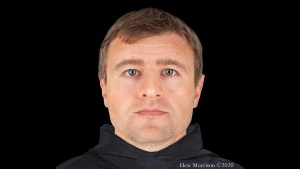In 2017, an archeological dig in Cambridgeshire, England, led to a unique discovery: the skeleton of a man who was executed by crucifixion, the only identified example of a Roman crucifixion ever found in Britain.
Now the team of researchers who have been studying the remains has released a facial reconstruction of the man who was put to death nearly two millennia ago with the same execution method as the Christ.
According to Smithsonian Magazine, the remains were discovered at the site of a former Roman settlement in what is now the village of Fenstanton. There, historical graves dating to the 3rd or 4th centuries yielded the remains of some 40 adults and 5 children, one of the adults being the crucified man.
The remains were identified as belonging to a man who had died by crucifixion because of the nail that was left impaled through its heel. Furthermore, researchers were able to identify that the man had sustained some sort of infection from being bound or chained up. It stands as the first evidence of Roman crucifixion discovered in Britain.
The discovery of the crucified remains in Britain is the focus of a new documentary from BBC, titled The Cambridgeshire Crucifixion.
Joe Mullins, a forensic scientist at Virginia’s George Mason University who is featured in the documentary, commented:
“I am staring at a face from thousands of years ago, and staring at this face is something I will never forget.”
Mullins is the digital artist who was responsible for the facial reconstruction, a field that usually has him reconstruct the faces of modern-day victims who cannot be identified. He called the skull of the crucified man the “most interesting” that he’d worked on in his entire career.
The image shows a man in his mid-30s, with brown hair and brown eyes, as was suggested by a DNA analysis. While the researchers were able to estimate his death to be between 130 and 360 AD, the reasons for his execution remain unknown.



